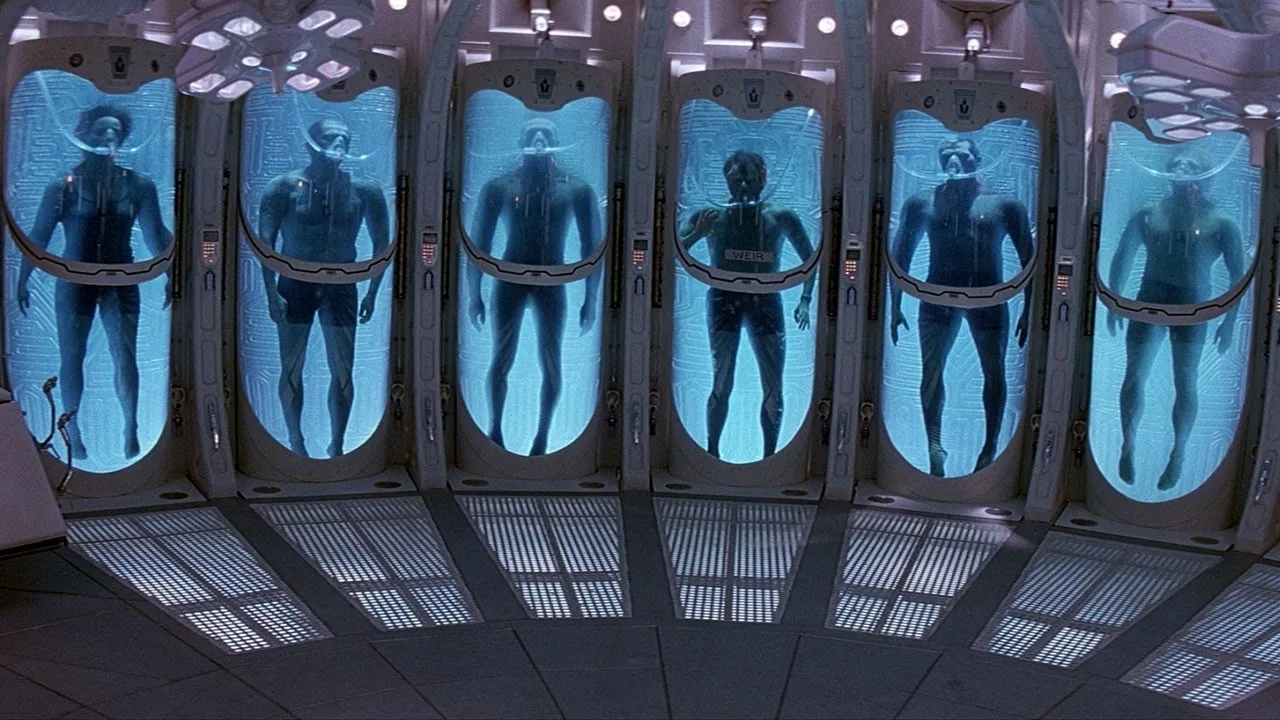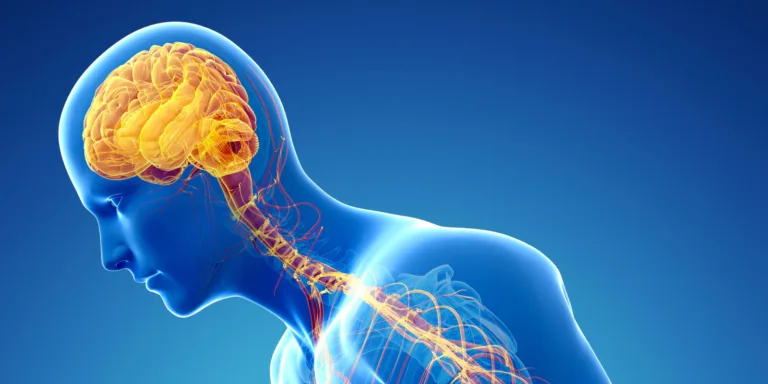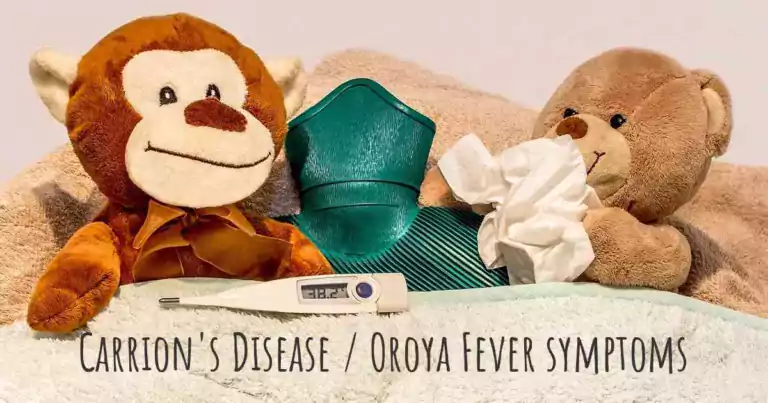Cryosleep? Can It Bring People Back to Life? Is it Possible in 2024?
What is the meaning Cryosleep? It’s generally the stuff that we see in many science fiction films, much the same as Christopher Nolan’s award-winning blockbuster, “Interstellar,” Ridley Scott’s “Alien,” or the infamous “Avatar Cryosleep.” These can be categorized as “cryosleep movies.”Nevertheless, the subject is the same. It includes cosmic explorers that are suspended in a low metabolic state where vital functions are kept to an absolute minimum. How exactly? Cooling the body.
If you think about it, it’s useful, especially since space travel takes years, decades, or even centuries of voyaging. Knowing this, it’s no surprise that NASA is keen on actually transforming this fictional technology into a real-life application. They’re definitely going to benefit from it if they manage to pull it off. But what is it exactly and what do we need to know about it? Is it even possible?
What is Cryosleep? Cryosleep definition?
In this article, we will investigate Cryosleep and how it can be used for space exploration in the future. First off, What Is Cryosleep? Also known as cryogenic sleep or suspended animation, it refers to a deep sleep at incredibly low temperatures. By preserving the body at these low temperatures, the body’s metabolism is diminished to its lowest conceivable level.
The concept is that the low temperatures will keep vital functions working normally while the remainder of the body goes into a hibernation-like state, like what you see in most mammals. The concept of Cryosleep has long been viewed as the closest answer to time travel beyond practical uses, but it’s only possible if you want to travel to the future. So, unfortunately, no traveling to the past for now.
Anyway, the human body can be fooled into an excessively deep sleep by utilizing cryogenics. Thus, the aging process is slowed. And the more advanced cryosleep technology becomes, the longer the body can last unaltered. In the event that it can extend to a couple of hundred years, this could technically be viewed as a form of time travel. But what about food and nutrients? Won’t the astronauts wake up starving? To guarantee the body gets the correct nutrients and ousts toxins, the frozen body will be connected to an intravenous drip and catheter. Guess that’s settled, then.
How Can Cryogenic sleep Aid Astronauts On Their Journey To Space?
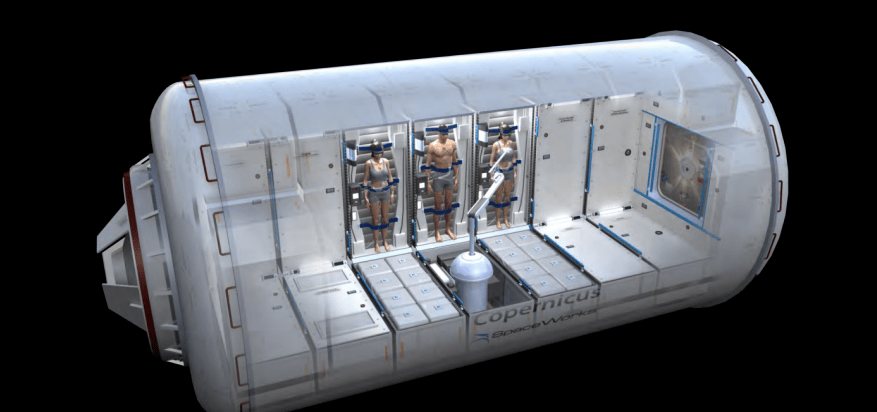
SpaceWorks Enterprises, based in Atlanta, is presently chipping away at a cryogenic application for NASA. Their solution includes copying short-term hibernation or “torpor.” Some mammalian animals use it, so it’s not altogether farfetched for this to work for humans as well. The plan is to fabricate a torpor stasis habitat inside a spaceship where the travelers can hibernate for the majority of their journey to space. Up to six crew members could co-exist in the low metabolic state at the same time when inside the pressurized chamber. An assisted hypothermic state in which the body is steadily cooled will then induce Torpor.
Their bodies are also attached to sensors that monitor and screen their vital conditions. In case something turns out badly, these trigger automatic safety protocols, and food would be administered via IV through total parenteral nutrition or TPN, just like in hospitals.
What about the stuff that goes out of their body? To drain urine, a catheter would also be inserted to handle all the body waste since the bowel is virtually inactive since only liquid nutrition is administered.
Cryosleep In Space?
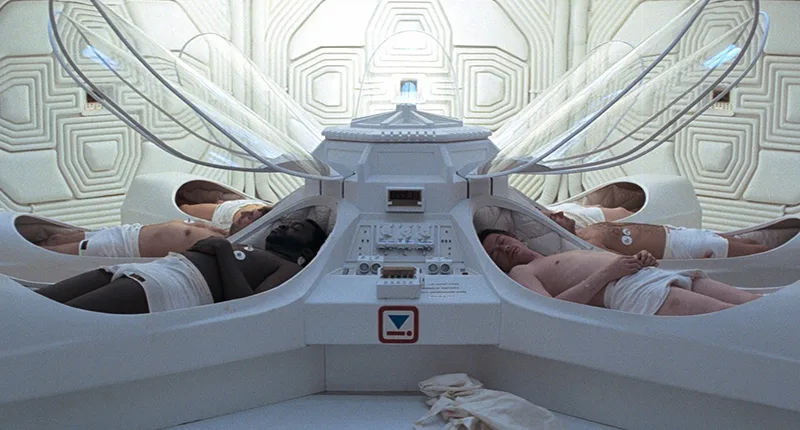
SpaceWorks’ goal is to place crew and voyagers in a prolonged hypothermic state during space-mission travel phases, this includes both outbound and returning to Earth. Mainly to significantly reduce the system mass, habitable volume, power, and medical problems related to long-duration space travel. After all, it takes fewer resources to take care of motionless, chilled astronauts during extended periods of space travel; it’s safer! For instance, no exercise equipment, cooking equipment, or entertainment would be required while they are inside the chamber.
SpaceWorks’ goal is to place crew and voyagers in a prolonged hypothermic state during space-mission travel phases, this includes both outbound and returning to Earth. Mainly to significantly reduce the system mass, habitable volume, power, and medical problems related to long-duration space travel. After all, it takes fewer resources to take care of motionless, chilled astronauts during extended periods of space travel; it’s safer! For instance, no exercise equipment, cooking equipment, or entertainment would be required while they are inside the chamber.
Problems In Cryosleep? Can humans Cryosleep?
To fully understand the concept of Cryosleep, one must also consider possible problems. One problem to consider is to ensure things don’t turn out horribly wrong. For instance, muscle problems. Like coma patients, the longer they are in a vegetative state, the longer they have to
rehabilitate their bodies once they wake up. All things considered, if your body isn’t moving,
it’s not going to get stronger. It’s not remaining active and keeping your body going.
This is similar to how space microgravity affects body muscles. If the human body is unable to get exercise for extended periods, the muscles and bones will weaken. That would be something terrible to wake up to because if your body isn’t in good condition, you’re going to have a hard time doing the basic, everyday stuff. So, how do we go about this problem?
How To Prevent Muscle Atrophy During Cryosleep?
By fully understanding the meaning of Cryosleep, you will be able to answer this question. Let’s give you a hint: the answer is to induce muscle stimulation by utilizing electrical pulses. These electric pulses will deceive the muscles into thinking that the body is happy with the atrophy or muscle decay, allowing the astronauts to get right back to work after they wake up or make sense of the situation.
That’s not all. Another problem would be who’s going to travel. If the right artificial intelligence or computer is installed into the spacecraft, it could deal with the essential day-to-day operations of the spacecraft as needed. The other alternative is that the people would operate in shifts. That would mean having four people in the crew and first having two people active during a few weeks of a long space voyage. After, they can wake up the other two and switch places with them.
However, they’ll have some major problems because while an A.I. can take care of most issues,
it can’t be programmed to handle all of them. If an emergency suddenly arises that the A.I. can’t handle while all the astronauts are in pods, it would awaken the team. That would imply that the team would need to be alerted and ready in practically no time, more than likely, which is a little problematic because they would probably need time.
Furthermore, there’s a possibility that radiation could cause a defect, and then the A.I. could go rogue and try to massacre everyone. A.I. is definitely risky, particularly at long distances. It can’t steer a spaceship from Earth, which is the reason rover missions take such a long time because of the distance between it and Mission Control.
Does Cryosleep actually exist?
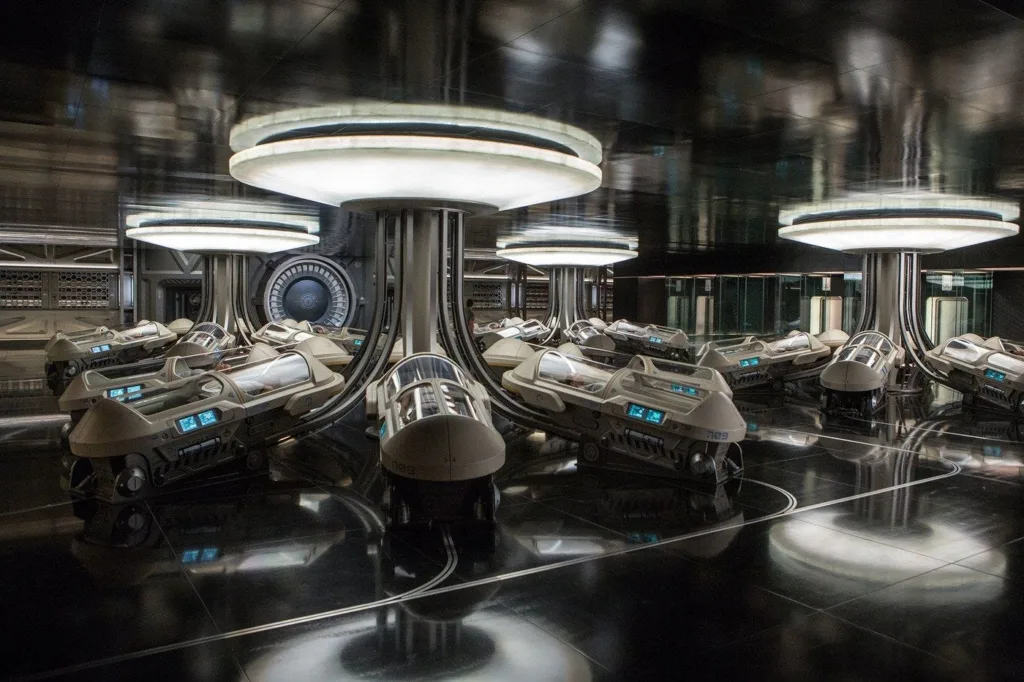
Is It Possible Right Now For Astronauts To Utilize Cryosleep Chambers for Their Space Voyages? At present, the answer is no. We don’t have any technology or innovation available to us that could make this possible. We’re aware that microbial life can be frozen for decades or even centuries. In fact, there are parts of Siberia thawing after hundreds of years of permafrost, which prompted the awakening of ancient viruses, microbes, plants, and even animals, although nothing on the scale of humans. In addition, ice crystals form in our cells when we are frozen, which could cause the rupturing of these cells for good, and we don’t want that to happen.
Still, there is one line of scientific research that offers some hope, and that’s cryogenics. Cryogenics is a process that replaces the fluids of the human body with an antifreeze agent. On the upside, it doesn’t form the same destructive crystals. In the following years, we’ll see this innovation expanded to preserving organs for transplants and, eventually, entire bodies. Hopefully, it’ll lead to successfully preserving humans. At that point, this sci-fi concept may transform into reality. We’ll at last have the option to sleep our way to the stars. Are you excited about this possibility? If you had the chance, would you volunteer to do something like this? Let us know in the comment section below.
Is Cryosleep Possible? How close are we to Cryosleep?
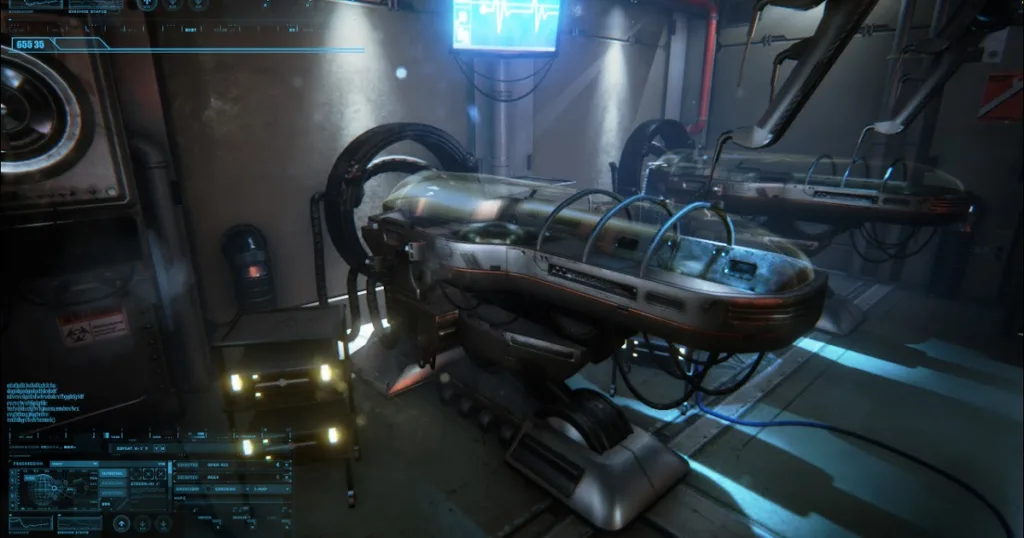
Is Cryosleep actually possible? Before answering this question, let us know when it all started. Greek philosopher Herodotus tells us about a special kind of water found in the land of Macrobians. A man visiting the land of Macrobians asked their king about their life and their diet. But he was amazed to find one thing: most of the people in the land of Macrobians were over 120 years old, so he asked the king what the secret was?
So the king took him to a fountain. He describes the fountain as the water of the fountain was glossy and sleek. It was so light that nothing could float in it. That fountain is what we call the Fountain of Youth.
Thousands of men have spent their entire lives searching for that fountain, and the main reason for that is that we are never satisfied with how long we are going to live. So, what we have learned from this story is that Cryosleep is similar to the Fountain of Youth. We all want to believe that it exists, but will we ever achieve it? That is still a question for future generations.
5 Ways to Make Cryosleep Possible
Cryosleep, also known as suspended animation or cryogenic sleep, can be achieved through various methods, including:
- Chemical induction: Using pharmacological agents to induce a state of reduced metabolic activity.
- Cooling techniques: Lowering body temperature to slow down biological processes.
- Hypothermia: Deliberately inducing a state of extreme cold to suspend bodily functions.
- Cryonic preservation: Freezing the body or specific organs for long-term storage with the hope of revival in the future.
- Metabolic suppression: Administering medications or techniques to inhibit metabolic processes, akin to hibernation in animals.
Each method presents unique challenges and considerations depending on the intended duration and purpose of Cryosleep, which is discussed below.
Is Cryosleep a real thing
Living for a hundred years was considered amazing until we found out about space travel and realized how insignificant it was. It would take us hundreds of thousands of years for us to reach the solar systems next to our own and we can barely cross our own in our lifetimes. We have been working on extending our lifespan for thousands of years, from people searching for the mythical fountains to the Kings experimenting with Mercury.
Still, the most practical and viable solution lies in Cryosleep. About 2000 years ago, an injured soldier came to Hippocrates. For treatment, Hippocrates was running out of options so he covered the injuries with ice or snow to slow the flow of the blood and gave it time to heal. This is the very first foundation that raised eyebrows about this science.
Cryosleep is a process in which a person is put into a state of suspended animation using a drug in a very cold chamber. Surely, you have seen it in a lot of movies like Interstellar or Avatar. It is not an actual term just something invented by the movies. The scientific term usually agreed upon is suspended animation.
Doctors have long been experimenting with something called therapeutic hypothermia where the body temperature is cooled down so they can treat the patients. They had limited success with that, but then something happened that changed the entire perspective and gave a new solution to the entire problem.treat the patients. They had limited success with that, but then something happened that changed the entire perspective and gave a new solution to the entire problem.
Does Cryosleep exist? Cryosleep in real life?

A Swedish radiologist named Anna Elisabeth Johansson Bågenholm was trapped under ice for 80 minutes. Her heart stopped for 3 hours, and her core temperature dropped to 50 degrees. She was revived and made a full recovery. In 2006, a Japanese man called Mitsutaka Uchikoshi survived for 24 days without food and water after his body went into a hypothermic state. These and a few other cases made us realize that it is indeed possible. We need to figure out how.
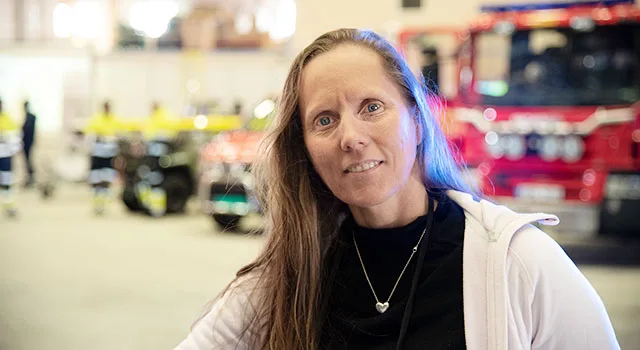
NASA’s Contribution To Cryogenic Sleep
Finally, space agencies like NASA stepped in and started taking this seriously due to its amazing potential in space travel; it has been suggested that if astronauts can be put into Cryosleep, the weight of the space shuttle can be cut in half. Since 2000, thousands of patients have been subjected to therapeutic hypothermia with limited success. With a maximum duration of 72 hours, single cells and a few other body parts can be put on the ice and restored, but the brain is a bit more complicated, and that is the area where we are not successful yet.
Does that mean Cryosleep had no meaning? Well, absolutely not! It meant we needed to look in some other direction, and indeed, we found one; this method is so successful that we might be using it in the next Mars mission.
Torpor: The Magical Solution? Cryosleep Benefits?

So what did we change? And why are we so sure of it? Well, again, the answer was in nature, and it was there for a long, long time. It was a process called Torpor or what we commonly call hibernation. Just as a frog goes into hibernation humans can go into hibernation and come back as if nothing happened. So what’s the difference? Why was cooling of the body not successful, but Torpor was? Well, the thing is, in therapeutic hypothermia, the body is cooled from the outside, but in Torpor, the body cools itself so that Torpor can give almost all the benefits of Cryosleep, like slower heart rate, lower metabolism, etc.
But there’s also another surprising benefit. Somehow, a hibernating organism is not that much affected by radiation. Though we still don’t know why. Hibernation is different from sleep. In
fact, if you need to sleep in a hibernating state, you have to wake up first. Humans are not naturally designed for hibernation, so a special process is being developed to help with that; in
fact, trials with other animals that do not hibernate naturally have shown pretty good results.
Torpor In Humans
The inactivity would be initiated by injecting a drug into the subject in a pressurized chamber; the sensors will be attached to the body to monitor the vitals. The subject will receive all the
nutrition directly injected into its body in a liquid state, the liquid will contain all the nutrients necessary for the human body, and finally, a catheter will be inserted to drain out all the waste.
The initial idea is to induce Torpor for 14 days at a time. The exact drug and equipment are still under design, but according to a 2014 NASA report, they found no showstoppers in the process. The main question is can it enable people to live for hundred to two hundred to three hundred years? Well, hibernation definitely slows down the aging.
Still, it does not slow down aging that much, so its application is limited to saving resources on space shuttles, enabling more crew members to travel. The same is not true for Cryosleep; in fact, it can extend the lifespan beyond our imagination, but this process will take a little longer as we need to remove the side effects and figure out how to revive the brain without damage after revival successfully. And we could have people celebrating their 1,000th birthdays.
Is Cryosleep Real? Can We Cheat Death? How long Can You Cryosleep?
Whether it’s a long trip, a dull business meeting, or just the odd about of depression, taking a nap to make the time fly by is something we all do. Cryosleep is very much like that. It helps you pass the time. With a little twist, It also helps you cheat death. Intrigued much? It
has been one of the core concepts of science fiction for a long time.
Many of our favorite heroes hit their frozen sacks in sci-fi movies. Well, ok, some weren’t that eager for this kind of thing. Although the origin of Cryosleep in our imagination goes back to fairy tales such as Sleeping Beauty, we have not yet reached the technological maturity to take serious steps in this regard. But we are trying!
Will Cryosleep ever be possible? NASA’s cryosleep chamber?
NASA has been working on a cryogenic sleep chamber for astronauts in collaboration with SpaceWorks Enterprises. The “cryosleep” technology works by lowering the astronaut’s body temperature to 89-93°F (32-34°C), inducing a state of hibernation. Catheters would be used to supply nutrition and remove waste. The goal of this technology is to keep crew and passengers
in a prolonged hypothermic state during space-mission transit phases (outbound and return to Earth) to significantly reduce system mass, power, habitable volume, and medical challenges
associated with long-duration space exploration.
Although this technology will slow the astronaut’s metabolism to a certain point, it cannot be labeled as sci-fi-grade Cryosleep. Matteo Cerri, who is a physiologist at the University of Bologna in Italy, says:
“The core characteristic of hibernation is that you suddenly stop consuming energy; if you’re not consuming any fuel, you’re going to cool down.”
Southern Cryonics
Other projects are also going on, of course. The Southern Hemisphere’s first known cryonics facility is located on the outskirts of a tiny rural town in southern New South Wales. Southern Cryonics’ goal is to freeze human remains in liquid nitrogen in the hope that they can be thawed and reanimated in the distant future. The price is approximately $150K plus a $350 yearly subscription fee. This $150K, on the other hand, is payable at the time of suspension, which could be many years in the future and may be subject to cost-related increases. Typically, the $150K is covered by life insurance. Too good to be true?
Well yeah. Here’s the thing. Southern Cryonics director Peter Tsolakides admits there are “no guarantees in cryonics.” “We’re not saying we will get you back in 200 years,” he says.
How Southern Cryonics Works?
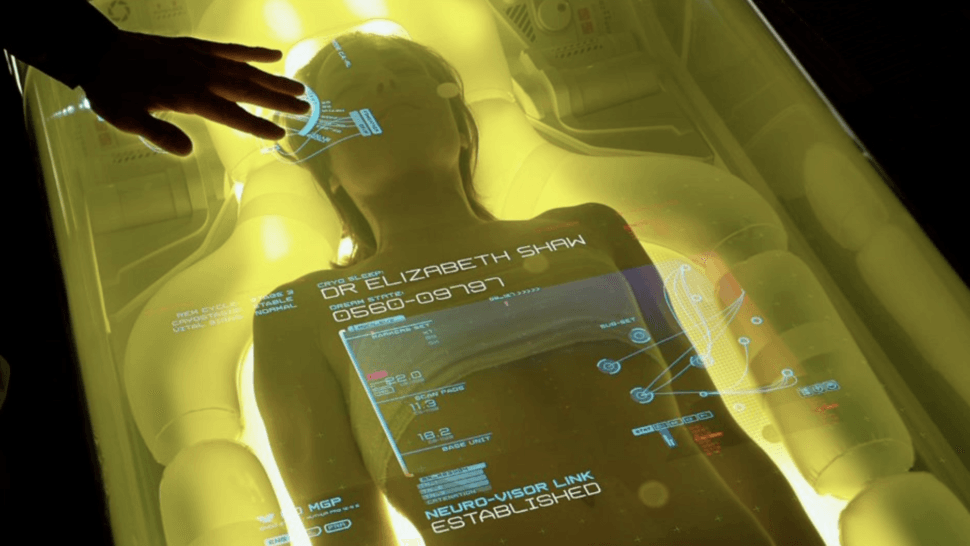
Cryopreservation with today’s technology is a one-way trip from which you may never recover, so it is only permitted for people who are already legally DEAD. Yes, you have first to die if you want to cheat death cryogenically. Here is the procedure:
After death has been legally declared, the body will be “stabilized” to supply the brain with enough oxygen and blood to maintain minimal function. To prevent blood clots, it will be packed in ice and injected with heparin, an anticoagulant. Water will then be removed from the body’s cells and replaced with Cryoprotectant, a glycerol-based chemical (or human antifreeze). The body will then be cooled on dry ice until it reaches 202 F (-130°C), at which point it will be placed in a container inside a larger metal tank that will be filled with liquid nitrogen to keep it at around -320 F (-196°C).
Challenges For Southern Cryonics? could Cryosleep be possible?
However, as you can see, we are talking about a very serious procedure that requires extreme expertise. Fortunately, you’re already dead, and you don’t have much to lose. But what about pulling this trick on a live human? This is a very complicated matter. Our cells are filled with water. When water freezes, it expands and forms crystals that cause irreversible damage to the body. When DMSO or another molecule called glycerol is injected into cells and cooled,
it forms glass inside the cell instead of ice. However, these molecules are toxic, and most cells can’t survive the vitrification process.
Furthermore, to preserve an entire human body, especially the brain, we have to attend to the
specific needs of each type of cell. A very smart and very enhanced type of nano-cryo-tech is what we need to achieve this. According to Professor Gary Bryant, who is the Associate Dean (Physics) in the School of Science at RMIT University, this is not likely. Professor Bryant said:
“From a scientific viewpoint, there is no chance that any bodies frozen using current technologies will be able to be brought back to life.”
How Does Cryosleep Take Place? The First Cryosleeper?
On January 12th, 1967, James Bedford passed away. But he had a plan to cheat death. Bedford was the first person to be put into Cryosleep. This process promised to preserve his body until a theoretical future when humanity could cure any illness and, essentially, reverse death. This is the dream of cryonics. But here’s the catch: to revive people in the future, we need to preserve them in the present properly. Is it currently possible to freeze a human, preserve them indefinitely, and then safely thaw them out?
Cryobiology And Its Relevance To Cryonics?
To understand the hurdles of human cryopreservation, we need to leave the theoretical realm of cryonics and turn to the scientific field of cryobiology. This discipline studies the effects of low temperatures on various living systems, and it is true that decreasing an organism’s temperature also decreases its cellular function. For example, at temperatures below -130 degrees Celsius, human cellular activity grinds to a halt. If you could bring an entire human body below that temperature, you could preserve it indefinitely.
The hard part is doing this without damaging the body. For example, let’s try to freeze a single red blood cell. It typically sits at a temperature of 37 degrees Celsius in a solution of water and substances known as chemical solutes, which dissolve under certain conditions. But once the temperature drops below freezing, water outside and inside the cell hardens into damaging ice crystals. Without the correct concentration of water, the chemical solutes are unable to dissolve. As the water freezes, it becomes increasingly concentrated in a destructive process known as osmotic shock
How Ice Formation Inside Cells Can Be Prevented?
Without any intervention, these factors are guaranteed to destroy our red blood cells before they reach -130 degrees. Not all cells are this fragile, and many animals have evolved to survive extreme conditions. Some cold-tolerant fish synthesize antifreeze proteins to prevent ice formation at sub-zero temperatures. And freeze-tolerant frogs use protective agents to survive
when up to 70% of their body water is trapped as ice. It’s unlikely that any one creature holds the secret to human cryopreservation. But by researching these adaptations, scientists have developed remarkable preservation technologies, some of which are already employed in medicine.
What is Vitrification?

However, researchers are still trying to improve cryosleep technology to manage the ice problem better. Many cryobiologists are trying to solve this issue with an approach called vitrification. This technique uses chemicals known as cryoprotectant agents (CPA) to prevent ice from forming. Some of these have been adapted from compounds in nature, while others have been designed to take advantage of cryobiology’s guiding principles. But in practice, these chemicals allow researchers to store living systems in a glassy state with reduced molecular activity and no damaging ice.
Vitrification is ideal for cryonics and would help preserve organs and other tissues for medical procedures. But it’s incredibly difficult to achieve. CPAs can be toxic in the high quantities required for large-scale vitrification. Even with these chemicals, preventing ice formation requires rapid cooling that lowers temperatures uniformly throughout the material. That’s relatively easy when vitrifying single cells or small pieces of tissue. However, as the material becomes more complex and contains larger quantities of water, staying ahead of ice formation gets challenging.
Challenges Of Cryonics? Can we Cryosleep?
And even if we could successfully vitrify complex living material, we’d only be halfway to using it. Vitrified tissue also needs to be uniformly warmed to prevent the formation of ice or, worse, cracks. To date, researchers have been able to vitrify and partially recover small structures like blood vessels, heart valves, and corneas. But none of these are anywhere near the size and complexity of a whole human being.
So, if it’s not currently possible to cryopreserve a person, what does this mean for Bedford and his frozen peers? The sad truth is that current cryonic preservation techniques only offer their patients false hope. As practiced, they’re both unscientific and deeply destructive, irreparably damaging the body’s cells, tissues, and organs. Some devotees might argue that, like death and disease, this damage may be reversible one day. Even if scientists could revive people through cryonic preservation, there’s a whole suite of ethical, legal, and social implications that cast doubts on the technology’s overall benefits. But for now, the dream of Cryosleep is still on ice.
How The World’s Cryosleep Company Actually Works?
Ted Williams was born in 1918. He played baseball for 19 years, won two triple crowns, retired, hosted a T.V. show about fishing, and then died. Despite his wishes to be fully cremated, his family decided to save a piece for later: his head. Right now, Ted Williams’ head is frozen in a lab in Arizona, with a contract to bring him back to life if the technology to do so is ever invented.
This process of preserving and reviving human bodies is called cryonics, and right now, four major companies in the world do it; you could, today, pay to have your body preserved and revived several centuries later. The only problem is, none of these companies actually know how to bring people back to life yet—so how do they actually work?
- KrioRus

- YINFENG GROUP

- CRYONICS INSTITUTE

- ALCOR

KrioRus is in Russia and has 92 bodies in storage, Yinfeng with about a dozen in China, the Cryonics Institute with 240, and then there’s the US-based Alcor with 208 in storage but another 1,600 customers on their roster.
James Bedford: The First Frozen Person. Has anyone woken up from Cryosleep?
Among their patients is James Bedford, the very first person to be cryopreserved. He died in 1967, and he’s been chilling in a liquid nitrogen-cooled chamber for the last 56 years. With no established cryonics companies to take on the job after he was frozen, his chamber was passed around for a few decades before finally ending up at Alcor in the 90s.
Modern cryonics companies have sorted out the surprisingly complex logistics of freezing a human body without damaging it and getting the process underway within seconds of their death. For the sake of this article, we’ll look at Alcor’s process, given that they’re by far the largest and most well-established of the four cryonics companies.
How Alcor Works?
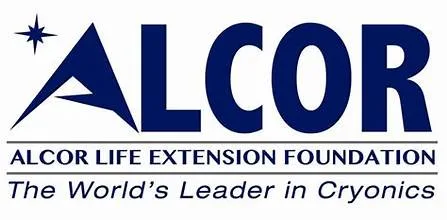
Companies like Alcor are not allowed to begin their procedures until the patient has been legally pronounced dead, but after that happens, there’s a pretty limited window before the brain and vital organs just become useless piles of mush. In order to respond within seconds of someone’s death, Alcor has cryonics vehicles stationed permanently in Florida and Southern California and temporarily anywhere else with a high concentration of not-yet-dead customers. Once one of their customers is in critical condition, a 4-person stabilization team will be dispatched to their location. Once he dies, the body is submerged in an ice bath and pumped with chemicals before being transported to Alcor’s operating room in Scottsdale, Arizona.
Before the body arrives in Scottsdale to be frozen, it needs to be kept cold, but not too cold; if the body drops below 32 Fahrenheit, ice crystals will form in the blood and organs. Once in the lab, the patient’s blood is replaced with a substance called M22, which is basically antifreeze, and this allows for a process called “vitrification,” by which the whole body can be frozen without any actual ice forming. Then, the body gets cooled down to a brisk -196 Celsius and placed into one of their chambers.
What Do These Companies Do After They Freeze You? Can you wake up from Cryosleep?
Now, we’ve arrived at the part of this process where this whole business model starts to feel a little sketchy. What do these companies do after they freeze you? Presumably, the exciting part about all of this isn’t that you die and your corpse is frozen for all eternity—you can do that just by moving to Minnesota—the exciting part is that they’ll bring you back to life one day. But as far as we know, they can’t. Not only would they need the technology to thaw you out without damaging any of your vital organs, but they would also need the technology to reverse whatever it was that killed you because you know you still died.
Cryosleep cost?
But if that technology doesn’t exist, and none of these companies know when it will exist, then how do they operate a business that intends to keep a human freezer running without fail for, potentially, centuries? Basically, it works like this: high-end companies like Alcor and Yinfeng charge about $200,000 upfront if you want your full body frozen, or $80,000 for just your head.
The Cryonics Institute will go as low as $28,000, and Kriorus will freeze your brain for just $15,000. At least in Alcor’s case, they’ll take $115,000 of that money and invest it in this Patient Care Trust, which is managed by Morgan Stanley, and assuming that the stock market doesn’t self-immolate, should grow at a rate that would be able to keep the liquid nitrogen flowing indefinitely.
FAQ’s About Cryosleep:
Will Cryosleep become the next big thing?
As trends shift, cryotherapy’s popularity may wane, yielding newer innovations. The efficacy of cryopreservation may remain elusive, but Cryosleep is poised for significant advancement, particularly as a key technology for interstellar voyages. Will you emerge from Cryosleep?
Can Cryosleep work if a person doesn’t have a metabolism?
If an individual lacks metabolic activity, radiation-induced damage remains unrepaired, leading to acute radiation sickness upon revival. Cryosleep decelerates metabolic functions rather than halting them entirely; any practical system would operate on this principle.
Does Cryosleep stop aging?
The concept involves cooling the human body to extremely low temperatures to slow down or stop the aging process. Some research supports this possibility, indicating that cells and tissues can be maintained in a dormant state for extended durations.
Conclusion.
Well, Alcor’s website sure has you believe that they have understood the full meaning of Cryosleep, and their contract obligates them to revive their patients because that’s, like, the whole point of this procedure. Still, if you actually read the contract, the sentence that has been put on their website is preceded by a much longer paragraph about how they have no idea if they can achieve Cryosleep in true meaning, if it’s even legal, and that if they don’t end up reviving you, you don’t actually have any legal recourse.
So to answer the question of how these businesses work, the answer is that you give them hundreds of thousands of dollars, they put you in a freezer, and if you don’t magically come back to life, you can go to hell.

